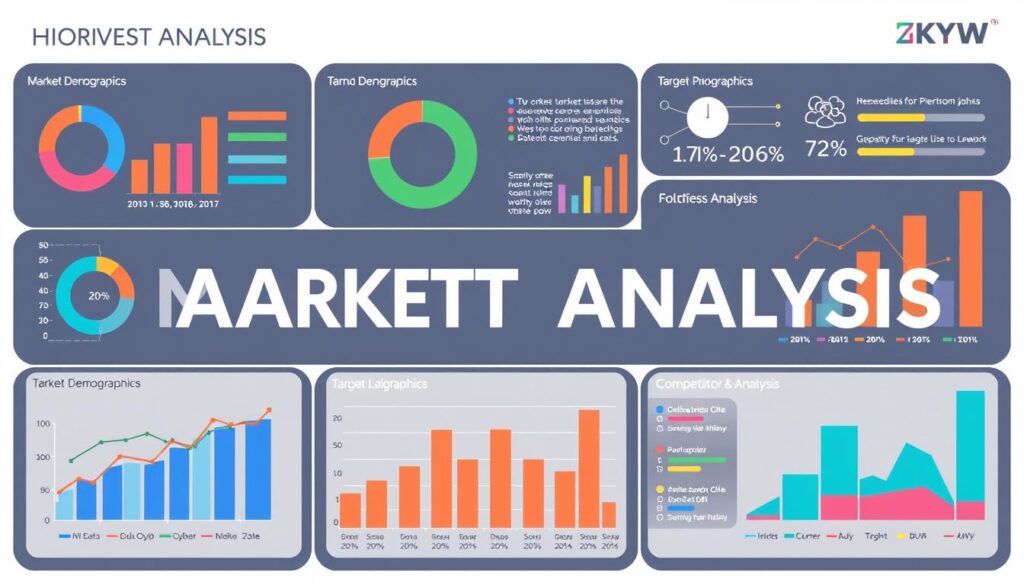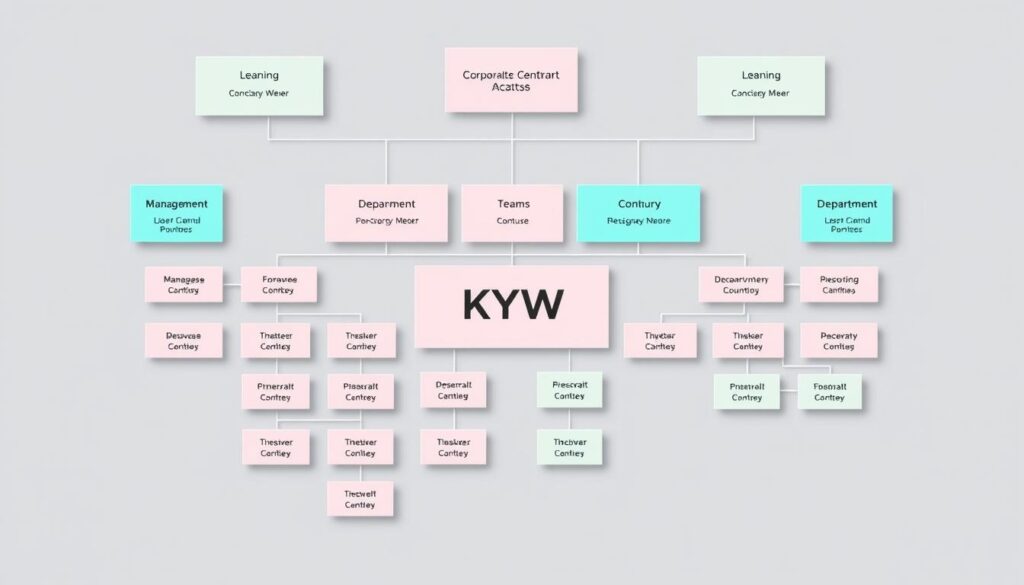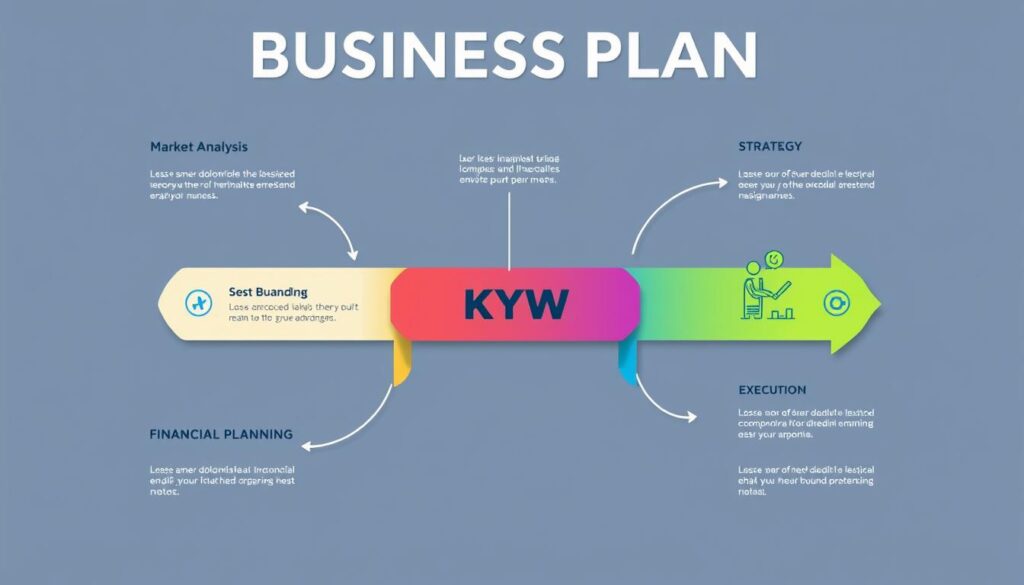How to Create a Winning Business Plan: Step-by-Step Guide
Starting my own business taught me how crucial a solid business plan is. It’s like building a foundation for your business. It guides you through the ups and downs of starting and growing a business. A good business plan helps you set clear goals and spot challenges early.
For entrepreneurs and business managers, a winning business plan is key. It shows you understand the market and can make money. It also outlines how you’ll manage risks and succeed. A strong plan can convince investors to back your business, with different goals for different stages.
But making a detailed business plan is hard. You need to know your market well and understand your competition. You must also have a clear idea of what you offer. You’ll need to predict growth, plan for staff, and show how your business will make money and last.
In this guide, I’ll show you how to make a business plan. It will help you meet market needs and convince investors. It’s also a tool for making decisions and keeping your business on track. This guide is for startups and established companies looking to grow.
Key Takeaways
- A business plan is a strategic roadmap that guides entrepreneurs through the challenges of starting and growing a business.
- A well-crafted business plan helps define your vision, clarify your goals, and identify potential problems before they arise.
- A compelling business plan is crucial for persuading investors to support your venture, with mature companies aiming for a 35% to 40% return and less mature ventures seeking up to 60%.
- Creating a winning business plan requires a deep understanding of your target market, a realistic assessment of your competition, and a clear vision for your products or services.
- This step-by-step guide provides insights and resources for developing a comprehensive business plan that satisfies the needs of the market, potential investors, and your own business goals.
Understanding the Importance of a Business Plan
Creating a solid business plan is key for any new business. It acts as a roadmap, guiding entrepreneurs through setting up and growing their businesses. A business plan is more than a document; it’s a tool for setting goals, making smart decisions, attracting investors, and getting funding.
Research shows businesses with a good plan grow 30% faster than those without. In fact, 71% of fast-growing companies have a plan. This shows how important it is to spend time and effort on a detailed plan for your business.
Defining Your Business Goals and Objectives
A business plan helps you set clear goals and objectives. By setting SMART goals, you give your business direction and purpose. Having clear goals keeps you focused and motivated, making sure your efforts match your vision.
Guiding Decision-Making
A business plan guides you in making decisions that match your goals. It outlines your strategies, target market, and financial plans. This helps you make smart choices, avoid mistakes, and keep your business on track for success.
Approximately half of small businesses fail before their fifth birthday. However, a well-structured business plan can help you navigate the challenges of running a business and increase your chances of success.
Attracting Investors and Securing Funding
Investors and lenders need a business plan before investing. A good plan shows you’ve thought deeply about your business and have a solid strategy. Small businesses are 2.5 times more likely to get funding with a solid plan.
Your plan should include financial projections for the next 3-5 years. By showing how you plan to make money and grow, you’ll gain investors’ trust and boost your funding chances.
Conducting a Thorough Market Analysis
A detailed market analysis is key to a successful business plan. It involves looking at the industry, finding your target market, and understanding your competition. You also need to know the trends and opportunities in the market. This helps guide your business decisions and strategies.

Identifying Your Target Market
Knowing your target market is crucial for good marketing strategies. It helps tailor your products or services to meet their needs. Consider demographics, psychographics, buying habits, and pain points when identifying your target market.
- Demographics: Age, income level, education, geographic location, and family composition
- Psychographics: Values, attitudes, interests, and lifestyle preferences
- Buying habits: Purchasing frequency, brand loyalty, and price sensitivity
- Pain points: Challenges or problems your target market faces that your product or service can address
By gathering and analyzing this information, you can create a detailed profile of your ideal customer. This helps you understand how to reach and engage them.
Analyzing Your Competition
Understanding your competition is vital for your market position. It helps you find ways to stand out. When analyzing your competition, look at their market share, strengths, and weaknesses. Also, examine their products, pricing, and marketing strategies.
- Market share: Assess the size and market share of your competitors to gauge their influence and success in the industry.
- Strengths and weaknesses: Identify your competitors’ strengths and weaknesses, and consider how you can capitalize on their weaknesses while mitigating their strengths.
- Product or service offerings: Analyze your competitors’ products or services, pricing strategies, and unique selling points to identify gaps or areas for improvement in your own offerings.
- Marketing strategies: Examine your competitors’ marketing and advertising efforts, including their online presence, social media activity, and customer engagement tactics.
By staying informed about your competition, you can adapt to changing market conditions, identify opportunities for innovation, and develop strategies to gain a competitive edge.
Assessing Market Trends and Opportunities
Identifying and using market trends and opportunities is key to success. Look at industry growth, technological advancements, regulatory changes, and consumer preferences. This helps you adapt to changes and meet customer needs.
- Industry growth: Analyze the growth rate of your industry and identify factors contributing to its expansion or contraction.
- Technological advancements: Stay informed about technological developments that could impact your industry or create new opportunities for innovation.
- Regulatory changes: Monitor changes in laws, regulations, or policies that could affect your business operations or create new market opportunities.
- Shifting consumer preferences: Identify evolving consumer preferences, values, or behaviors that could impact demand for your products or services.
By keeping up with market trends and opportunities, you can position your business for success. You can adapt to changes, meet customer needs, and find new growth opportunities.
Crafting Your Company Description
In this section, you’ll write a compelling company description. It will highlight your business background, mission, and vision. This is your chance to impress potential investors, partners, and customers.
Start by explaining what your company does and what you offer. Be clear and to the point. Talk about what makes you different from others. Also, mention your target market and how you meet their needs.
Then, share your company’s history and background. Tell the story of how it started and any major achievements. Introduce your founders and key team members. Their expertise and experience add credibility.
Your mission statement is key. It should be short, memorable, and inspiring. It guides your decisions and keeps your team focused.
“Our mission is to revolutionize the way people connect and share experiences through innovative technology solutions that enhance their daily lives.”
Finally, share your vision for the future. This should be ambitious yet realistic. It inspires your team and outlines your growth path.
Your company description is more than just facts. It’s a chance to tell your story and connect with people. By highlighting your background, mission, and vision, you’ll create a compelling business plan.
Developing Your Products and Services
When writing your business plan, it’s key to describe your products and services clearly. This part should show what makes your business unique and how it meets your customers’ needs.
Detailing Your Offerings
Begin by giving a detailed overview of what you offer. Explain the features and benefits of each product or service. Make sure your language is simple and easy to understand.
Talk about any new products or services you plan to offer. This shows your commitment to growth and innovation. It can impress investors or partners.
Highlighting Unique Selling Points
To grab your audience’s attention, focus on what makes you different. Identify your unique selling points (USPs). These could be:
- Superior quality or performance
- Innovative features or technologies
- Exceptional customer service or support
- Customizable options or personalization
- Eco-friendly or socially responsible practices
According to a recent study, 88% of consumers are more likely to purchase from companies that offer unique and innovative products or services.
By highlighting your USPs, you show the value and advantages your business offers.
Pricing Strategies
Your pricing strategy is crucial. It should match your target market, goals, and the market’s conditions. Consider:
- Cost of goods sold (COGS), including manufacturing, labor, and distribution expenses
- Competitor pricing for similar products or services
- Perceived value and price sensitivity of your target customers
- Desired profit margins and revenue targets
Use surveys to understand customer price preferences. Analyze competitor prices to find the best price for your offerings. Be ready to adjust your pricing as the market changes or when you introduce new products.
By detailing your product development, service offerings, unique selling points, and pricing strategies, you make a strong case for your business. This section should show the value your company provides and its potential for success.
Designing a Compelling Marketing and Sales Strategy
A good marketing and sales strategy is key to a business’s success. It shows how I will promote and sell my products or services. It considers my target market, pricing, advertising, and promotions. The goal is to make a strong brand and reach potential customers.

To make a strong marketing strategy, I will focus on several key points:
- Defining my unique value proposition and clearly communicating the market need my business aims to solve
- Conducting thorough market research to identify my target audience and understand their preferences, behaviors, and pain points
- Analyzing my competition to determine my competitive advantage and develop a pricing strategy that reflects the added value I offer
- Establishing key performance indicators (KPIs) to track the effectiveness of my marketing efforts, such as website traffic, conversion rates, customer acquisition cost, and customer retention rates
The marketing industry is always changing. It’s important to keep up with new trends and adjust my strategy. Some trends to consider include:
- Leveraging short-form video content, as it has proven to have the highest return on investment (ROI) among various content formats
- Exploring influencer marketing to expand my reach and build brand credibility
- Utilizing social media direct messages to engage with customers on a more personal level
Identifying Effective Promotional Tactics
To make my marketing efforts more effective, I will focus on the best tactics for my audience. This might include digital and traditional marketing channels, such as:
- Social media marketing to build brand awareness and engage with my audience
- Content marketing, including blog articles, infographics, and case studies, to educate and inform potential customers
- Email marketing to nurture leads and maintain relationships with existing customers
- Referral programs to encourage word-of-mouth marketing and customer loyalty
- Public relations initiatives to generate positive media coverage and enhance brand reputation
According to recent statistics, companies can generate up to 208% more revenue from their marketing efforts when sales and marketing are aligned.
Establishing Sales Channels
Choosing the right sales channels is crucial for my business. I will consider what my target market prefers and align my sales strategy with my goals. Some potential sales channels to explore include:
- E-commerce platforms to reach a wider audience and provide a convenient online shopping experience
- Brick-and-mortar stores to offer a tangible product experience and foster personal connections with customers
- Wholesale partnerships to expand my distribution network and reach new markets
- Direct sales through a dedicated sales team to provide personalized service and build long-term customer relationships
By creating a detailed marketing and sales strategy, I am confident in my ability to attract customers, generate revenue, and build a strong brand identity in my industry.
Creating a Comprehensive Financial Plan
As an entrepreneur, I know how important a financial plan is for my startup. It acts as a guide, helping me manage my business finances well. With a detailed plan, I can figure out startup costs, predict revenue and profits, and find out how much funding I need.
Estimating Startup Costs
First, I need to estimate the costs of starting my business. This includes things like equipment, inventory, marketing, and staff. By looking at these costs carefully, I can make a budget that’s realistic and avoid surprises. To get it right, I will:
- Research costs specific to my industry
- Get quotes from suppliers and service providers
- Plan for both one-time and ongoing expenses
- Save money for unexpected costs
Projecting Revenue and Profitability
To see if my startup will work, I have to predict my revenue and profits for three to five years. I’ll look at market trends, competition, and my marketing and sales plans. By making financial projections, I can:
- Spot any cash flow problems
- Set achievable revenue goals
- Check if my business model is profitable
- Make smart choices about pricing and spending
I’ll also think about different scenarios to prepare for different outcomes. This makes my financial plan stronger.
Determining Funding Requirements
With my costs and revenue predictions, I can figure out how much money I need to start and run my business. I might need to find investors, get loans, or use my own money. To get funding, I will:
- Make a strong pitch that shows my business’s potential
- Show I understand my market and competition well
- Have a solid financial plan that investors can trust
- Look at other funding options, like crowdfunding or grants
By making a detailed financial plan, I can face the challenges of starting and growing my business with more confidence. It helps me make smart choices, attract investors, and aim for long-term success.
Outlining Your Organizational Structure
Creating a clear organizational structure is key for smooth operations and good decision-making. This part of your business plan should show how your company is set up. It should list the roles and duties of each team member and the legal form of your business.
Start by looking at your business needs and what you have. Think about your workforce size, the industry you’re in, and your future goals. A good organizational structure has a clear hierarchy, departments, roles, and how decisions are made. It should help your team work well together and communicate easily.

- CEO: Responsible for strategic planning and overall direction
- COO: Oversees day-to-day operational management
- Department Heads: Provide oversight for their respective areas
- Team Leaders: Coordinate and guide team members
- Employees: Execute tasks and contribute to the company’s success
Your departmental structure should cover important areas like marketing, finance, operations, human resources, and sales. Each department should have clear duties that help meet your business goals. Make sure everyone knows who they report to to avoid confusion and boost productivity.
A well-structured organization is like a well-oiled machine, with each component working in harmony to achieve a common goal.
Choosing the legal structure of your business is also important. You can choose from a corporation, partnership, sole proprietorship, or LLC. This choice affects taxes, liability, and who owns the business. It’s wise to talk to lawyers and accountants to pick the best option for you.
Lastly, introduce your management team. Talk about their experience, skills, and what they bring to your company. By having a detailed organizational structure section in your business plan, you show that you’re ready for success. You have the right people in the right places working together towards your goals.
Developing an Action Plan for Implementation
Now that you have a solid business plan, it’s time to create an action plan. This step outlines the tasks, milestones, and timelines needed to make your vision real. Research shows that about 80% of successful efforts come from following through on planned actions. This highlights the importance of a good implementation strategy.

Start by clearly defining your project goals. This will guide you in outlining your action plan. Using shared tools can improve communication and get valuable feedback from your team, no matter where they are. It’s best to develop your action plan within the first six months to a year of starting your business. This shows your dedication and orderliness to others, like grantmakers.
Setting Milestones and Timelines
When making your action plan, set clear, achievable milestones. These milestones should match your business goals and objectives. They act as checkpoints to track your progress and make any needed changes.
It’s important to schedule your project milestones to monitor progress. Gantt charts can help visualize your implementation schedule. The timeline for your action steps should be clear, showing when and for how long each step will take. Remember, your action plan should be updated regularly to fit changing needs and conditions.
Assigning Responsibilities
It’s crucial to assign tasks to team members and clarify their responsibilities. This helps in assessing performance and tracking progress. When choosing your action planning group, include diverse individuals from different sectors and backgrounds. This diversity can make your action plan more effective and comprehensive.
In community partnerships, solving health and development issues often requires a community-wide effort. This involves sectors like media, business, religious organizations, schools, and more.
Resource allocation is also key in your implementation plan. It helps reduce risks by ensuring you have the necessary resources for your project. The six most important items to include in an implementation plan are:
- Objectives
- Scope statement
- Outline of deliverables
- Project timeline
- Risk assessment
- Resource allocation
By focusing on these essential elements and following your action plan, you’ll be on your way to making your business plan a reality.
Tips for Crafting a Winning Business Plan
Creating a winning business plan is a big task. It’s important to remember a few key tips. Focus on clear writing, use visuals wisely, and proofread well. This will make your plan stand out and share your vision clearly.
Keeping It Concise and Clear
Writing clearly and concisely is crucial. Entrepreneurs who write a focused plan are more likely to succeed. Keep your plan short and to the point. This makes it engaging and shows you can communicate well.
Using Visual Elements Effectively
Visuals like charts and images can make your plan more impactful. They break up text and make your plan easier to read. Use them to highlight important data and support your points. Good visuals can make complex info easy to understand.
Proofreading and Editing
Before sharing your plan, make sure it’s perfect. A clean plan shows you’re detail-oriented and professional. Check for mistakes and ask for feedback. By editing well, you show you’re committed to quality and make a strong impression.
Remember, a well-crafted business plan is not only a roadmap for your venture but also a powerful tool for attracting investors and securing funding. By keeping your writing concise, leveraging visual elements effectively, and ensuring your plan is polished through meticulous proofreading and editing, you set yourself up for success in the competitive world of entrepreneurship.
Business Plan Guide: Essential Components for Success
Creating a detailed business plan is key for any entrepreneur. It acts as a roadmap, guiding your decisions and attracting investors. In this guide, I’ll cover the must-have parts of a successful business plan.
The first part is the executive summary. It should give a quick overview of your business. Include your mission, a brief on your products or services, and your goals.
Next, do a deep dive into market analysis. Show you know your target market, competitors, and trends. This helps you craft a strong marketing and sales plan.
A sound business plan can determine the success or failure of a venture. Entrepreneurs who create business plans are more likely to succeed than those who don’t.
Describe your products or services in detail. Explain what makes them unique and how they solve problems. Also, talk about your pricing strategy and how it fits with your market and competition.
The financial projections section is vital. It should include realistic figures for revenue, expenses, and profits. Include startup costs, funding needs, and where you’ll get capital.
Lastly, outline your action plan for starting and growing your business. List milestones, timelines, and who’s responsible for what. This clear plan helps you tackle the challenges of running a business.
- Executive summary
- Company description
- Market analysis
- Products and services
- Marketing and sales strategy
- Financial projections
- Action plan
Remember, a solid business plan is crucial for getting funding. By focusing on these key areas and presenting a strong case, you’re on your way to making your business dream a reality.
Conclusion
Now you have the tools and knowledge for successful business planning. Creating a good business plan takes dedication and research. It’s important to understand your market, competition, and trends well.
Remember, your business plan should change as your company grows. It’s not just a plan; it’s a guide for your business. It also helps attract investors and get funding. Include your mission, financial details, and what makes you stand out.
To make your plan stronger, add statistics, visuals, and a clear call-to-action. This makes your plan credible and shows what to do next. Always check your plan for mistakes and make sure it’s clear and focused.
With a solid business plan, you’re ready to face the ups and downs of business. Use good planning to make your business dreams come true.
FAQ
What is the purpose of a business plan?
A business plan is like a roadmap for entrepreneurs. It helps you define your vision and goals. It also helps spot problems before they happen.
How can a business plan help me make informed decisions?
A good business plan makes you think deeply about your goals. It shows you how to achieve them. This helps avoid mistakes and ensures success in the long run.
What should I include in my market analysis?
In your market analysis, find out what your target market needs. Look at their demographics and behaviors. This helps you understand how your product or service can meet their needs.
Analyze your competitors too. See what they offer and how you can stand out. Also, watch market trends for opportunities to grow your business.
How detailed should my product or service description be?
Give a detailed overview of your products and services. Include pricing, features, and what makes them special. Explain how they meet your target market’s needs.
Talk about your pricing strategy. Make sure it fits your target market and business goals.
What should I consider when creating a marketing and sales strategy?
When planning your marketing and sales strategy, think about how you’ll promote and sell your products. Consider your target market, pricing, and advertising. Choose the best marketing channels to reach your audience.
Build a strong brand presence. Use sales channels that fit your target market and business goals.
How can I make my business plan more engaging?
To make your business plan engaging, keep it concise and clear. Focus on the most important information. Use visuals like charts and images to share key points.
Proofread and edit your plan to avoid errors. A professional-looking plan is crucial for investors and partners.
What are the essential components of a comprehensive business plan?
A good business plan includes an executive summary, company description, and market analysis. It also has a product/service description, marketing and sales strategy, financial projections, and an action plan.
The executive summary should give a brief overview of your business. It should highlight the most important points and grab the reader’s attention.
How often should I review and update my business plan?
A business plan is a living document. It should be reviewed and updated as your business grows. This keeps your company on track and adaptable to changes and new opportunities.

